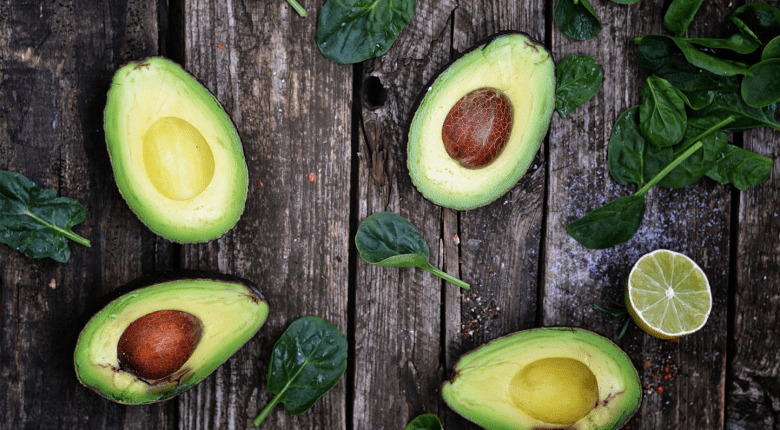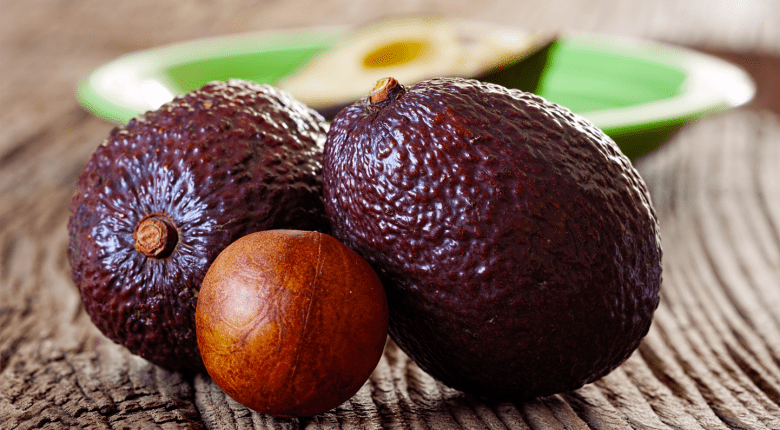Avocados have been “on trend” for what seems like forever. Millennials are even sometimes dubbed the “avocado generation”, such has been the fruit’s popularity as well as an indication of its perception as a luxury foodstuff. Are avocados actually good for you, though? We take a look at the health benefits of the avocado, what to look out for when buying fresh avocado, and how to store them…
Is the avocado a fruit or vegetable?
The avocado is not a vegetable (as you could be forgiven for assuming), but a fruit that belongs to the laurel family, alongside its cousins bay, cinnamon, and camphor.
Are avocados good for you?
Its high fat content might well have earned it the name “butter fruit”, but there’s no need to avoid these pear-shaped wonders – quite the opposite in fact. The fats in avocados are unsaturated and are believed to be very healthy. Avocados are good news for anyone with high cholesterol because they do not contain even a trace of cholesterol; rather, if eaten when perfectly ripe, they can actually help to reduce cholesterol levels. They’re also very low in sugar. On top of this, they provide plenty of essential vitamins, such as A, B, C and E, K and are rich in potassium, calcium and iron.
Avocado health benefits
There’s evidence to suggest that regularly eating avocados could have widespread and perhaps surprising health benefits. The monounsaturated fatty acids in avocados are believed to support the absorption of other beneficial fat-soluble antioxidants such as beta-carotene, which may help to reduce the risk of developing age-related macular degeneration.
Half an avocado, the NHS recommended daily portion size, provides approximately 25% of the daily recommended intake of vitamin K which is essential for bone health. Research also indicates that phytochemicals in avocados can selectively inhibit the growth of precancerous and cancerous cells and boost the lymphocyte cells that play a role in the immune system. The folate in avocados is believed to be key to these potential benefits and has also been linked to lowering depression as well as possible benefits to a healthy pregnancy.
The fibre in half an avocado (approx. 2.5g – 3g) also contributes to your daily fibre intake. Read more about how much fibre you should be aiming to eat and the benefits of doing so.
So, the potential health benefits of avocado are clear, whether you like trendy avocado toast, in a salad, a sandwich or even on its own.
Not all avocados are the same
As with many fruits and vegetables, avocados present themselves in various types that differ in appearance, firmness and taste. The most famous varieties are the “Fuerte” and “Hass” avocados, and here’s a brief explanation of their differences:
Hass avocados
- Tend to be small and oval-shaped
- Have a rich and nutty flavour
- Have a thick purplish-black skin, and an uneven texture

Hass Avocado
Fuerte avocados
- Are pear-shaped and have a neck
- Have a mild, creamy taste
- Have a smooth, green skin

Fuerte Avocado
When is an avocado ready to eat?
Anyone who has ever bought an avocado will have wondered how to tell if it is fresh or ripe. There is no single answer to this question because it all depends on the variety. For example, if you decide to buy a Hass avocado, remember this: as the avocado ripens, its colour will change from green to black; a ripe fruit will give slightly when gently pressed; and, if the avocado is wrinkled, it is overripe.
Another tip: it is best not to buy a Hass avocado that is already black, because you have no way of knowing how long it has been this colour, and it may already be overripe. In contrast to the Hass, you can tell how ripe a Fuerte avocado is simply by looking at it. As soon as black areas appear on the green skin, the fruit is spoiled and is no longer edible.
Varieties of avocados
In addition to these two well-known varieties, the following varieties are also available, especially in Central Europe: Bacon, Ettinger, Pinkerton, Reed and Ryan.
The same ripeness test applies to all these lesser-known varieties: Pick up the avocado and, if it gives slightly when gently pressed, it is ready to eat. Whether ripe or unripe, all these varieties have a green skin.
How many calories are there in an avocado?
A 75g Hass or Fuerte avocado without skin or stone contains just over 140kcal according to the NHS calorie checker.
How to store fresh avocado
If an avocado is not yet ripe you can store it, unrefrigerated, at room temperature, which will encourage the ripening process. As soon as avocado is ripe, place it in the fridge where it will stay fresh for up to 12 days.
You should take avocado out of the fridge about one hour before you need it, as it will be easier to prepare. If you don’t want to use the whole avocado at once, leave the stone in the second half and drizzle a little lemon juice over it to prevent any unappealing brown spots developing and stop it spoiling too quickly. Cover the avocado half with cling film, put it back in the fridge, and make sure you use it without too much delay.
Avocado nutrition: don’t forget the stone
Avocado stones (seeds) normally receive little or no attention; the majority of people don’t realise that, nutritionally, they have a whole lot to offer and that they can easily be put to good culinary use. Check out the following ideas and get inspired:
- Grate a little avocado stone into muesli, salads or smoothies etc. Its abundant nutrients, antioxidants and vitamins may help to boost the immune system.
- Grate the stone and add hot water to make a terrific tea, which might well help with burning fat – the stone’s active constituents and amino acids are believed to stimulate the metabolism.
- If you want to potentially give your skin or hair a boost, stir some powdered stone into water to form a paste. Apply the paste directly to your skin, or mix it with coconut oil to make a deep hair conditioner.
Avocado: its versatility and panache
There are many great ways to enjoy this versatile fruit: raw, as an ingredient to enliven a salad, as a delightful dip or in a sensuous smoothie. Avocados work very well in sauces too – their high fat content means they deliver a particularly smooth and buttery sauce, allowing you to forget the cream. They can also be a surprisingly welcome addition to dessert dishes, e.g. when combined with lime, avocados make a delicious cheesecake. Need some more inspiration? Check out our avocado recipes here.

We hope you enjoyed this article. Please feel free to share it across social media… We’re on Facebook, Instagram, Twitter and Pinterest. Please be advised that the information in this article does not constitute medical advice. Always consult a medical professional before making any changes to your diet.



